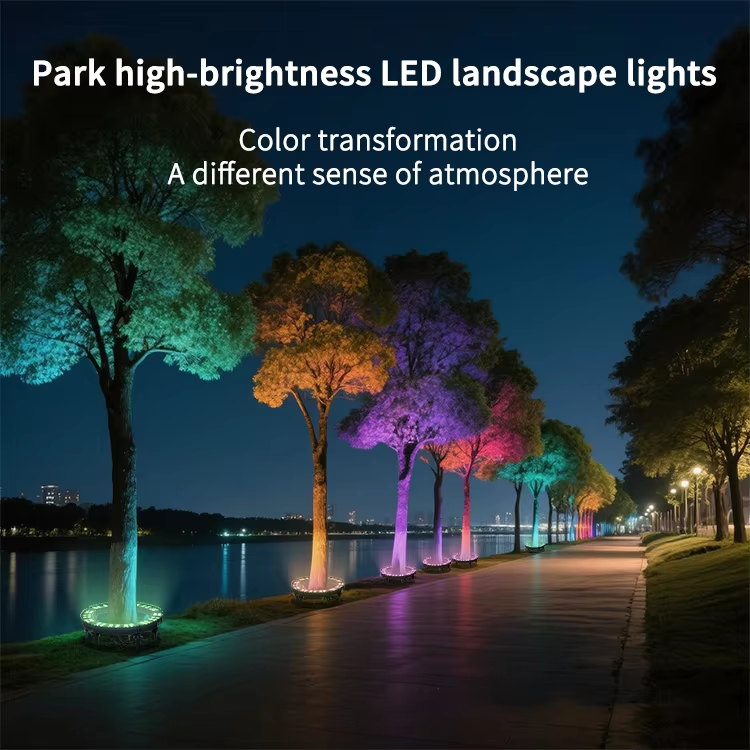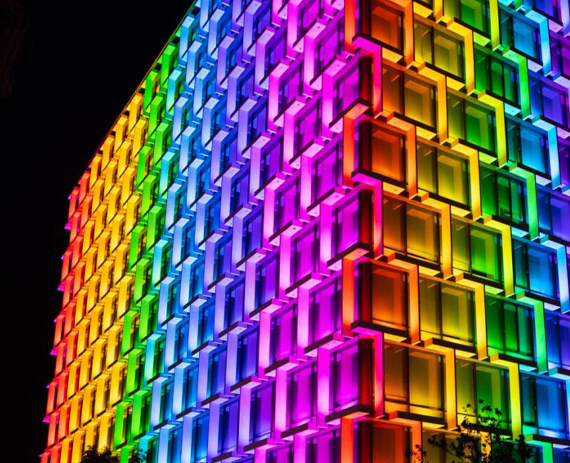
Explore DALI and DALI-2: global lighting control standards delivering energy efficiency, flexibility, and smart integration for modern buildings.
READ MORE>>
2025-09-22 17:30

An LED circular tree light is a ring-shaped (or segmented) high-efficiency LED fixture installed around a tree trunk or recessed at the base to deliver uniform 360° uplighting that accentuates bark texture and canopy silhouette while minimizing glare and light spill. It blends aesthetics and function—suiting private gardens, hotel entrances, urban boulevards and event spaces—and comes in residential low-voltage models, heavy-duty commercial rings, RGB/RGBW color-changing variants, solar-hybrid units and modular/split designs for retrofit. Key selection points include power (typically 12–36 W per ring), color temperature (2700–5000 K), IP rating (IP65–IP67), lumen output and control compatibility (Timer / DALI / DMX / wireless). Proper installation prioritizes tree health (no bark-penetrating mounts, allow growth gap), weatherproof cabling, earthing and night-time commissioning; routine lens cleaning and driver checks keep performance steady. Compared with halogen or metal-halide, LEDs typically cut energy use 60–80%, offer 30k–50k hour lifetimes and much lower maintenance, so at scale—with dimming schedules and smart controls—payback is often rapid, while spectral and timing strategies can minimize ecological impact and make trees lasting, energy-efficient nightscape landmarks.
READ MORE>>
2025-09-06 17:20

Facade lighting control transforms buildings into dynamic nightscapes, blending art with smart technology. From DMX and DALI systems to pixel mapping and energy-saving automation, modern solutions enhance aesthetics, cut costs, and support sustainable smart cities. The future of facade lighting lies in responsive, efficient, and meaningful urban connections.
READ MORE>>
2025-08-29 16:32

This article provides an in-depth analysis of outdoor wall washer lighting and highlights a critical installation mistake—burying the fixture too deep. Through optical principles and DIALux simulations, it introduces the “flush-with-surface” rule to eliminate dark zones and uneven light distribution. The guide emphasizes three pillars for flawless results: multidisciplinary collaboration in design, millimeter-level accuracy in construction, and professional calibration during installation. Beyond aesthetics and energy efficiency, proper installation enhances reputation and long-term performance. The article also underscores the importance of continuous maintenance and digital twin archives to ensure lasting excellence in architectural lighting projects.
READ MORE>>
2025-08-21 15:58

Strategic lighting transforms buildings into iconic night landmarks using floodlighting, contouring, and dynamic RGBW systems. Balance 2700K-5000K color temperatures with high CRI>90 for material authenticity. Modern LEDs save 60-70% energy, while DMX controls enable responsive scenes. Proven results: Beijing Daxing Airport’s phoenix-wing illumination and urban hotels achieving 35% nighttime traffic growth. LNJAMI delivers precision outdoor solutions merging art and engineering.
READ MORE>>
2025-08-12 18:30

This guide combines real-world case studies and technical insights to outline key outdoor lighting strategies for facades, parks, and bridges. It walks you through defining lighting objectives, balancing luminous flux and color temperature, and implementing glare control and fixture selection—all while emphasizing sustainability and maintenance. Integrating project data from Shanghai, Lyon, São Paulo, and more, it highlights innovative trends like bioluminescent pathways and AI-driven adaptive dimming. Designed for lighting professionals seeking a human-centered, tech-forward approach, this practical handbook shows how to create safe, emotionally resonant, and energy‑efficient urban nightscapes.
READ MORE>>
2025-07-28 17:42


